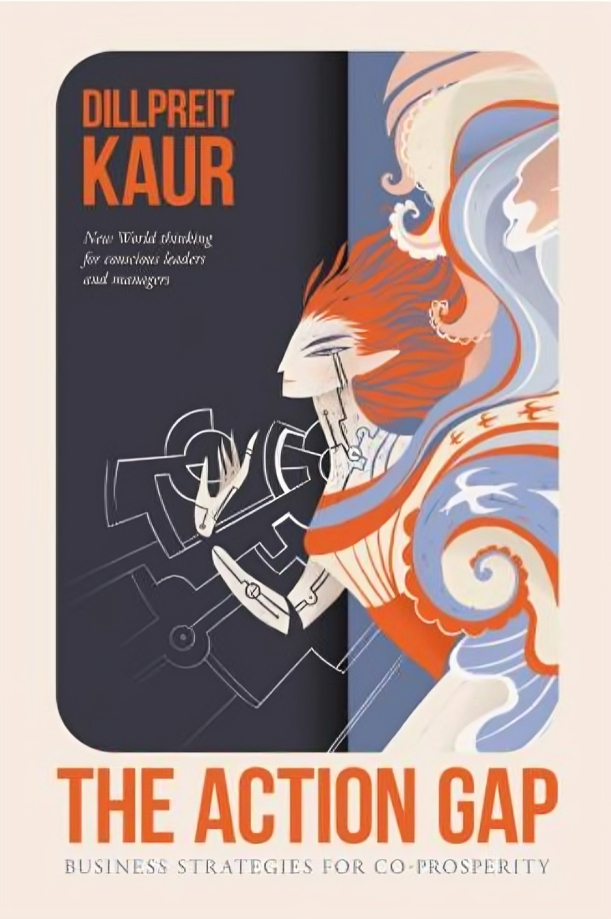Blurb:
So often as leaders we look for solutions outside of ourselves or our teams, hoping it is better than what we can come up with. Sometimes when we find none, we give up. We give up on the pure potentiality of how we can improve things ourselves. With World Economic Forum Global Risks Reports looking bleaker year-on-year, with more interconnected risks than ever, it is time to turn inward and take grounded action with all that we have instead. This book provides an approach called dignity. It is a seven step creative problem-solving process that believes answers to our complex wicked problems are within and around us. We just need to work better, together. Visit www.goalweaver.biz for more information.
My Review:
“The Action Gap” by Dillpreit Kaur delves deep into the theme of internalizing solutions rather than seeking them externally. It emphasizes the importance of harnessing individual and collective potential to address complex issues, offering a structured approach called dignity - a seven-step creative problem-solving process.
Dillpreit’s message resonates strongly in today’s world, where global risks are escalating, and interconnected challenges abound. The book advocates for a shift in mindset, urging readers to recognize the power within themselves and their teams to effect meaningful change. It promotes collaboration and proactive problem-solving rooted in self-awareness.
Dillpreit adopts a textbook-style format, presenting facts, figures, and references through tables, footnotes, and references. While this might initially seem daunting, the writing style is refreshingly simplistic and easy to comprehend. The use of relatable examples and scenarios enhances understanding, making complex concepts accessible to readers.
Dillpreit’s insights into modern concerns and innovative problem-solving strategies offer a refreshing perspective. Unlike many self-help books, “The Action Gap” avoids boring readers with unnecessary facts, case studies, or real-life examples. Instead, it prioritizes thought-provoking reflections and value-based discussions, enriching the reader’s experience with every page turn.
Moreover, Dillpreit’s emphasis on environmental consciousness adds further depth to the text, highlighting the importance of sustainability in contemporary problem-solving approaches. Overall, “The Action Gap” provides a valuable framework for individuals and organizations seeking to bridge the divide between intention and action, making it a must-read for anyone committed to driving positive change.
“The Action Gap” is highly recommended, particularly for academic and professional settings. Its structured approach and emphasis on practical tips for navigating challenging situations make it invaluable.

